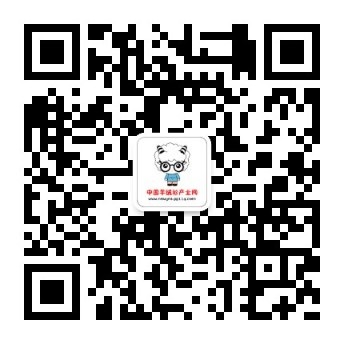
According to CNN, the bankruptcy case in the US retail industry continues to increase. More than 300 retailers have filed for bankruptcy so far this year. Bloomberg expects that there will be 8,600 retail stores closed in the United States this year, more than during the 2008 economic crisis.
The U.S. retail market is crying. Since April, U.S. spending has hit a record high this year. Some economists said that the growth of consumer purchasing power means that the US market has recovered.
Click to learn immediately about the cashmere sweater industry
It is not difficult for the US market to show signs of recovery from this year's China Textile and Apparel Trade Fair (New York) and Apparel Sourcing USA, Hometextiles Sourcing and Texworld USA. Showcasing clues in the scale of exhibitors at the show ("New York Show"). In July of this year, the New York show will bring back the largest number of exhibitors in history to the Javits Convention Center. Exhibitors' product selection and exhibition themes also unleash a signal that textiles are returning to the United States as a highly automated and environmentally friendly industry.
All kinds of data show that the outlook for the US textile and apparel industry in the second quarter is clear. For the Suzhou Pavilion in China, which is about to go to New York, it has high hopes for the American market. In July of this year, 32 apparel and home textile companies will visit the New York Exhibition in the form of “Suzhou Famous Brand Exhibition Area†to showcase high-quality products covering apparel, home textiles and accessories to overseas customers.
Click to know how to trade Cashmere Sweaters
Supply Chain Managers from China
The recovery of the U.S. textile industry is a source of concern for China's industry and trade suppliers. China was once the lowest cost country in the textile industry in the world. However, the rapid increase in the number of middle-class households and the sustained economic development have led to an increase in the cost of production of American textile companies in China. Under the New Deal of Trump, the prospects for Sino-U.S. trade are even more complicated and confusing. Some experts have analyzed that policy changes and U.S. tariffs are causing brands to consider transferring production lines back to the United States.
“Although Trump encourages 'Made in the United States', the opportunity is two-way, and Chinese companies can boldly go out, both at home and abroad,†said Ye Minxia, ​​sales director of Jiangsu Jinmeilai Co., Ltd. The U.S. market exports home textile products such as carpets to 20 million U.S. dollars. It is a long-term partner for large-scale low-end supermarkets such as Wal-Mart and costco. In the past two years, the sales figures have basically maintained an upward trend.
Jinmeilai is a typical Chinese supplier of industry and trade. “In the past, we had more cooperation with traders, and this time we hope to reach more primary sources of customers.†Ye Minxia said that direct understanding of the needs of buyers is the most important purpose of participating in the exhibition. In recent years, Chinese factories have continuously extended their design front-end and back-end of the craft and their service capabilities have been greatly improved. On this basis, face-to-face communication with buyers can, on the one hand, improve profit margins, and facilitate the communication of details such as process, design, and delivery period, which can make “infeasible†feasible.
From customer orders to orders, to the factory independent research and development to guide customers, after many years of precipitation and accumulation, Ye Minxia believes that Chinese suppliers' technological innovation capability is not comparable to the past, but also benefit from China's textile and garment industry improved supply chain, manufacturing enterprises The advantages of collecting information on fabrics, design trends, etc. are abundant, and most export-oriented manufacturing companies have already established specialized trading teams to provide customized services to overseas customers. China's foreign trade and export companies are actively transitioning to R&D and design to enhance their industry integration and value-added service capabilities and transform themselves into outstanding supply chain managers.
Amazon broke out, who can laugh to the end?
At the New Manufacturing, New Retail, and New Eco 2017 Technology Innovation Summit (Shanghai) in April this year, Edward Gribin, President of Alvanon, a US clothing strategy consultancy, said that in the past three years, the flow of people in U.S. malls has dropped by 57%. Amazon may become the largest apparel retailer in the United States by June this year. The structural subversion of the industry forced every American brand to think about it, either join Amazon or be eliminated by Amazon.
Digitalization and e-commerce are the most important opportunities for retail transformation. The Chinese factory, which was once behind the scenes, is now entering the US business world with a brand new image and e-commerce strength. Two years ago, Suzhou Taihu Silk & Silk Co., Ltd. broke into the Amazon platform and directly operated and sold its own home textile brands to US consumers. Its sales increased year after year. Pan Ganlan, director of cross-border e-commerce, said that in the future, companies will use the United States as the main market to promote brand awareness through this exhibition.
“U.S. consumers are not unfamiliar with silk products. For example, products such as silk pillow cases that sell for around US$20 are widely accepted, and silk suits targeted at high-spending consumers over 35 are more popular than silk quilts.†Pan Ganlan said In addition to grasping the differences in Sino-US spending habits, Chinese sellers must also adapt to the highly stringent operations supervision of Amazon.
“It is precisely this rigorousness that allows branded businesses that have settled in to be able to grow healthily.†Pan Ganlan believes that Amazon is a very good platform for the development of Chinese factories. The majority of US-based sellers do not have factories and have poor control over supply chains. These are precisely the trump card advantages of Chinese suppliers. “In the future, I am still optimistic about the U.S. market. With the changes in U.S. consumer spending and the industry’s emphasis on e-commerce, market space will be further released.â€
Click to learn about the cashmere sweater market
Consumption upgrade drives demand for silk products
Whether in the United States or China, the retail markets in both markets are each seeking a way out in the tide of consumer upgrades and e-commerce changes. Xu Ting, the general manager of Suzhou Embryonic Mother Silk Co., Ltd., believes that the silk category is part of the consumption upgrade. From a long-term point of view, the US’s protection of local companies will, on the contrary, accelerate consumption. A survey report has shown that the use of silk in international luxury brand fabrics is much larger than that of chemical fiber.
“In the future, we will build a brand based on the Chinese market, and we hope that overseas expansion will be based on the customer’s understanding of our brand.†For example, in response to this U.S. exhibition, companies will exhibit a luxury brand with the Italian chloe The Song Jin handbags, jointly developed by the director of jewelry, and three of the 16 ready-to-wear garments specially developed for the 2016 APEC conference. Xu Ting admitted frankly that, unlike foundry companies, he valued and positioned high-end overseas brands and distributors to cooperate with each other. “We hope to find partners who are pursuing the value of silk products and have high quality to develop and innovate together.â€
At present, science and technology, innovation, consumers, and even global politics are changing the way the industry thinks. In the face of European and American markets, competition between China and ASEAN countries, especially Vietnam, remains fierce. In the era of consumer upgrading and e-commerce changes, Chinese textile and apparel companies are trying to take advantage of the rapid response of the supply chain and brand culture, and once again shake the US market. Will the Suzhou Pavilion that is about to go to the United States participate in the exhibition? Let us pay close attention.
Want to learn more about the cashmere sweater, cashmere sweater industry, cashmere sweater trade, cashmere sweater market related information: accessible
Pay attention to WeChat public number "Cashmere sweater industry platform" to learn more about cashmere sweater information

Polyester Fabric,Poly Rayon Fabric,Polyester Rayon Fabric,Poly Cotton Fabric
Shaoxing Yuezan Textile Co.,Ltd , https://www.yuezantextile.com